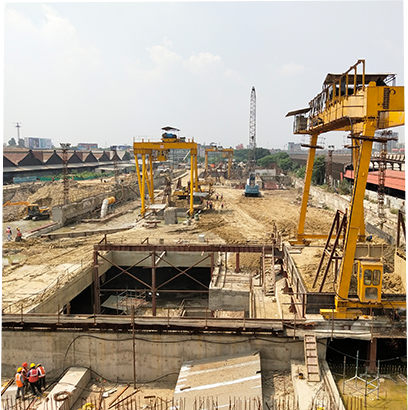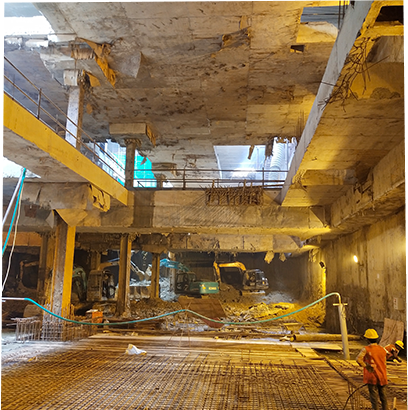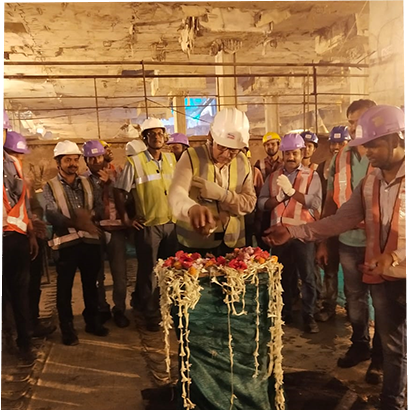
Hurrah moment for Kolkata heroes!
The East-West Metro Project team sets an example by crossing several hurdles to complete the base slab for India’s deepest Metro station
30m below ground level
Footfall of 10.5 lakh daily
730 trains plying through railway yards
Dealing with huge numbers is a daily chore for the Afcons team building Howrah Metro station. At 30m below ground level, this will be India’s deepest Metro station. It is situated between two active and one of the busiest railway yards in the country. The footfall is over 10.5 lakh and over 730 trains ply through these railway yards daily. The area also has a bustling bus terminus and ferry services across Hooghly River apart from various other modes of transport. “You can now imagine how busy the area is. Integrating Howrah Metro station with all these features is most critical,” says Satya Narayan Kunwar, Project Manager.
Amidst a sea of challenges, the team had its hurrah moment this week, with the completion of the base slab of the Metro station for the East-West Metro Project. At 30m deep, it is almost equivalent to a 10-storey building and is located below platforms 14 and 17 of the historic Howrah railway station. The Metro station is aligned with the underwater Metro tunnels that are almost 26m below the Hooghly riverbed.
Such a deep underground facility between two active railway yards is being built for the first time in India. The flow of logistics is hugely restricted as there are no dedicated entry and exit points. Traffic management is a rigorous task and so is catering to massive volumes of construction materials amidst persistent conflicts with passenger flow and goods handling undertaken by the Railways.
“There were safety-related concerns due to movement of heavy machineries. During heavy cage lifting operations, we had to take blockade of railway platforms around the impact zone cranes. An elaborate traffic management was put into place to manage passengers and other traffic movement during blockade in coordination with the Railway authorities. We managed to mitigate these challenges efficiently and made way for every equipment. The high-capacity cranes in fact are now part of the breath-taking Kolkata skyline,” elaborates Kunwar.
Apart from the critical location and depth, the area also witnesses poor geology and water table nearing to ground level. Structural design of this station was a challenge, and as part of the solution 1.5m thick diaphragm walls were designed that go as deep as 46m to 52m. The barrettes and piles were designed as deep as 62m for negotiating huge uplift due to high water table. These are the deepest and thickest diaphragm walls ever constructed in India for any underground Metro station.
“Completing the base slab after battling such tough conditions makes our achievement even sweeter. My team has been exemplary. Creating so many records amidst so many challenges has been tough, but they remain steady and motivated even in the toughest of times,” Kunwar signs off.







